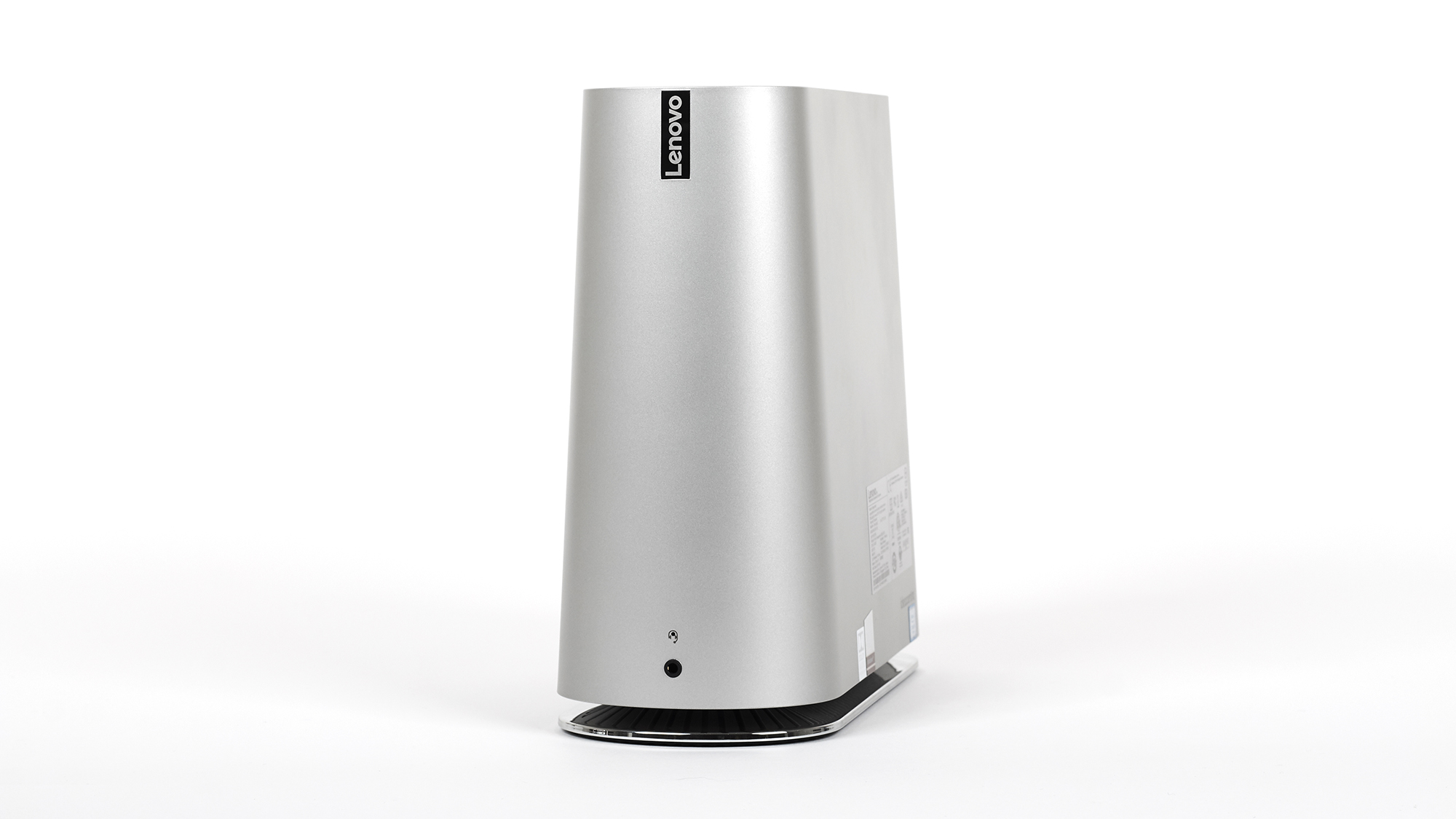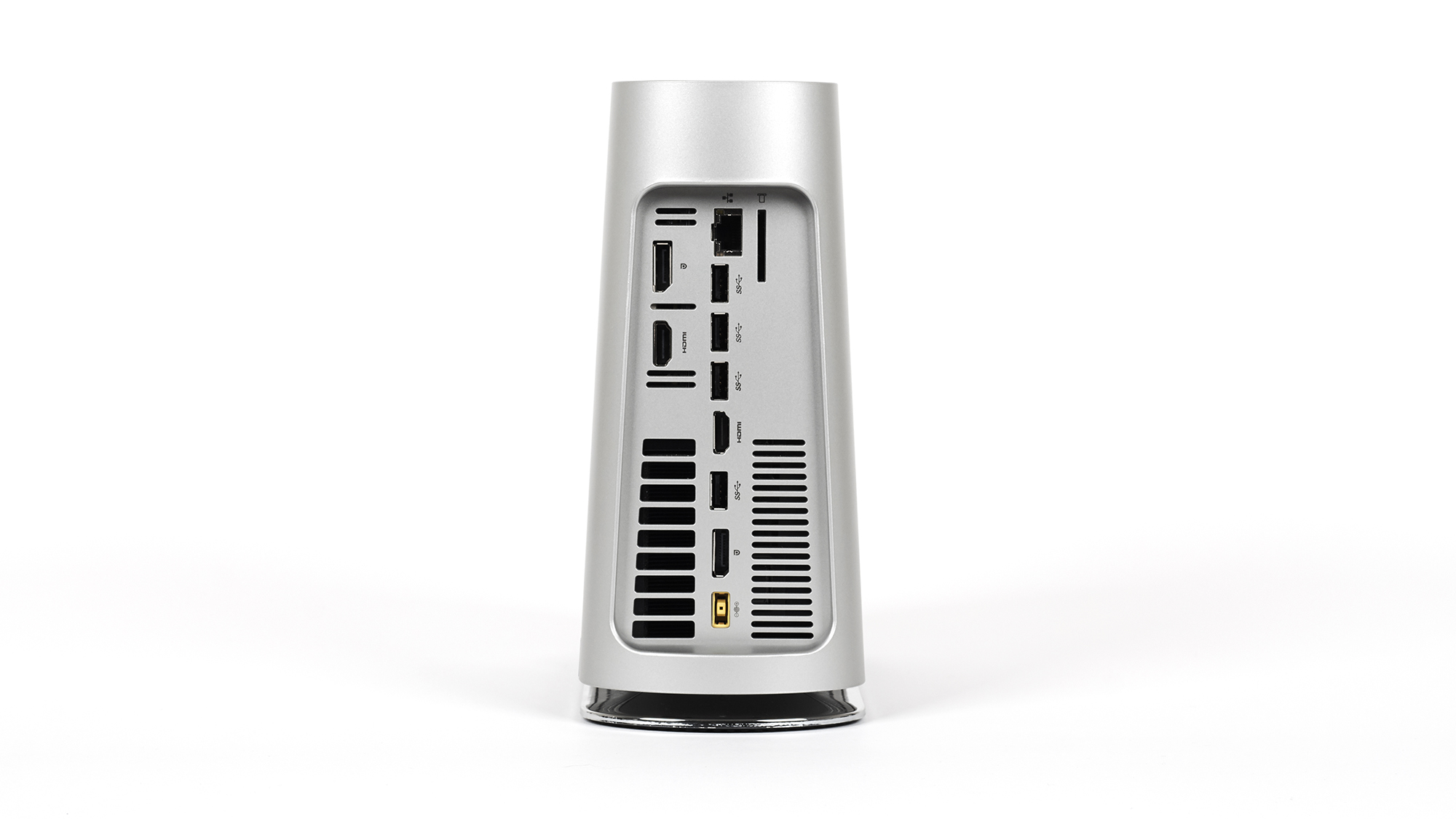Lenovo IdeaCentre 620S review: Small PC, big punch
This compact PC crams in more power than you might think


A nifty little PC for the money, with few issues that aren’t hard to avoid on such a small form factor and the kind of balanced CPU/GPU performance that makes our current favourite mini PC, the Asus VivoMini, look almost quaint. This is more expensive, but is absolutely worth it.
-
+
Dedicated GPU; Excellent performance for a mini PC; Smart design
-
-
Internal components are fiddly to access; Bundled peripherals are a bit naff
The IdeaCentre brand tends to evoke, at least in our minds, sensible all-in-one PCs like the IdeaCentre AIO 520 and its new replacement, the IdeaCentre AIO 520S. It's a diverse line, though, also containing the gaming-focused 700 series and the 600 series of compact desktops. The latter has been a little bare recently -- it's been two years since the launch of the slightly weird, projector-equipped IdeaCentre 610S - but that's changed with the IdeaCentre 620S, a gimmick-free home entertainment PC that's amazingly compact.
Despite standing upright, like a teeny tower desktop, this could certainly be considered a mini PC: it uses space-saving SODIMM memory, like the MSI Cubi 3 Silent and HP Elite Slice, and adopts the typical mini PC tactic of running a low-power CPU. In this case it's the Intel Core i5-7400T, the 'T' suffix of which indicates it's part of Intel's 'power optimised lifestyle' family of chips. That means it runs at slower clock speeds than the main Core i5-7400, dropping from a 3GHz base with a 3.5GHz Turbo Boost to 2.4GHz with a 3GHz boost.
If that sounds like a bum deal, know that the entire point is to reduce both the CPU's power draw and its running temperatures, which is important inside such a cramped chassis -- without the space for an adequate cooling system, mainstream desktop chips would be throttled anyway. The Core i5-7400T also still has its big brother's four cores, so it's not a total downgrade in the pursuit of efficiency.
Besides, although the IdeaCentre 620S spec we tested (you can also get it with the dual-core Intel Core i3-7100T) is a few hundred pounds cheaper than the Elite Slice, it markedly beats HP's modular system on general performance. In our 4K benchmarks, it got a very decent 86 in the image test and 82 in the video test, so a spot of occasional, lightweight media editing is possible -- but the big surprise was its multitasking score of 76.
Mini PCs often crumble in this test, as it puts so much pressure on the CPU that low-power parts struggle to cope. Not so with the IdeaCentre 620S, which kept its composure (we suspect the 8GB of DDR4 RAM helped) and earned itself an overall score of 80. That's 19 ahead of the Elite Slice, and only 5 behind the barebones Zotac Magnus ER51060, which runs a full-fat AMD Ryzen 5 1400.

That's a seriously impressive showing for a compact desktop; there's no doubt it can take care of media duties like streaming video, and office applications won't pose any problem either.
Usually, mini PCs don't include a dedicated GPU which makes them ill-suited to any kind of media or editing work, but the IdeaCentre 620S has managed to stuff a 4GB Nvidia GeForce GTX 1050 Ti in here as well. This is hands-down our favourite budget graphics card, and there's no indication its tight accommodation has impacted performance: in Dirt: Showdown, for instance, we could keep Ultra settings and anti-aliasing engaged, and still get a slick 78fps at 1,920x1,080. The card kept up at 2,560x1,440 as well, producing 56fps, and even managed to stay playable at 3,840x2,160 -- 4K, in other words -- with 30fps.
Asus VivoMini review: Everything you need in one small package Raspberry Pi 3 B+ review: Petite perfection Asus Chromebit review
There are a couple of storage options to choose from, and in keeping with our sample being the most expensive IdeaCentre 620S spec, we got the 1TB hard disk with a 16GB Intel Optane memory drive; the cheaper option is just the hard disk by itself.
This is, nonetheless, one of the IdeaCentre 620S' more humdrum features: the 1TB capacity is adequate but not huge, and we've seen Intel Optane Memory make far more drastic improvements to mechanical drive speeds than this one has. Specifically, we measured a sequential read speed of 845MB/s and a sequential write speed of 90MB/s in AS SSD -- so the latter remains mediocre even by hard disk standards, and although the read speed far exceeds un-accelerated SATA levels, it doesn't breach the 1,000MB/s mark like we know Optane can be capable of.
That said, it's a welcome speed boost either way, and we never felt like we had to wait an age for the PC to start up or open an application, as is so often the case with vanilla hard disks.
Lenovo says you can open up the IdeaCentre 620S to upgrade the storage, and even access the CPU and graphics card -- this is true, it's just frustratingly fiddly to do so. There are loads of tiny screws that need removing from both the detachable base and the internal chassis, and even once we've got all them out, we still had a tough time breaking into any of the tightly-fitted internal compartments. It almost makes more sense to treat this like a locked-down mini PC in the Elite Slice or Asus VivoMini vein, and just stick with the components you get out of the box.
What you don't get by default, on either of these other systems, is an integrated speaker that can go as room-fillingly loud as the IdeaCentre 620S'. Not that it's particularly good for music or movies -- there's a decent amount of bass, but the mids sound quite muddled, and trebles lack sparkle and sharpness, so you'll still need a good set of external speakers for home entertainment use. Fortunately, it serves voice calls well enough, and this seems to be the intended use, judging by the inclusion of far-field microphones as well.
Multiple monitors are supported by the assortment of two HDMI outputs and two DisplayPorts, while data and peripherals are managed by four USB3 ports, an SD card reader and an Ethernet jack (802.11ac Wi-Fi is also built-in). These are all at the back, leaving just a 3.5mm combo headset jack at the front, but it's a pretty good mix of connectivity for a mini PC.
You can also save one of the USB3 ports by using the bundled wireless mouse and keyboard, which both connect via a single USB receiver. That doesn't mean you necessarily should, though: we like the little touch of the receiver slotting into a port on the mouse for easy storage, but the peripherals themselves are too plasticky and unsatisfying to use to be worth recommending over any half-decent aftermarket mouse or keyboard.
Of course, this could be said of almost every bundled peripheral set in PC history, and as far as faults with the IdeaCentre 620S go, at least it's not anything to do with the PC itself. In fact, this has turned out to be a nifty little PC for the money, with few issues that aren't hard to avoid on such a small form factor and the kind of balanced CPU/GPU performance that makes our current favourite mini PC, the Asus VivoMini, look almost quaint. This is more expensive, but is absolutely worth it.
| PROCESSOR | Quad-core 2.4Ghz Intel Core i5-7400T |
| RAM | 8GB DDR4 |
| FRONT USB PORTS | None |
| REAR USB PORTS | 4x USB3 |
| GRAPHICS CARD | 4GB Nvidia GeForce GTX 1050 Ti |
| STORAGE | 1TB hard drive, 16GB Intel Optane SSD |
| DISPLAY | None |
| OPERATING SYSTEM | Windows 10 Home |
| WARRANTY | One year RTB |
| DETAILS | www.lenovo.com |
| PART CODE | 90HC0011UK |
Get the ITPro daily newsletter
Sign up today and you will receive a free copy of our Future Focus 2025 report - the leading guidance on AI, cybersecurity and other IT challenges as per 700+ senior executives
-
 ‘Phishing kits are a force multiplier': Cheap cyber crime kits can be bought on the dark web for less than $25 – and experts warn it’s lowering the barrier of entry for amateur hackers
‘Phishing kits are a force multiplier': Cheap cyber crime kits can be bought on the dark web for less than $25 – and experts warn it’s lowering the barrier of entry for amateur hackersNews Research from NordVPN shows phishing kits are now widely available on the dark web and via messaging apps like Telegram, and are often selling for less than $25.
By Emma Woollacott Published
-
 Redis unveils new tools for developers working on AI applications
Redis unveils new tools for developers working on AI applicationsNews Redis has announced new tools aimed at making it easier for AI developers to build applications and optimize large language model (LLM) outputs.
By Ross Kelly Published
-
 Google layoffs continue with "hundreds" cut from Chrome, Android, and Pixel teams
Google layoffs continue with "hundreds" cut from Chrome, Android, and Pixel teamsNews The tech giant's efficiency drive enters a third year with devices teams the latest target
By Bobby Hellard Published